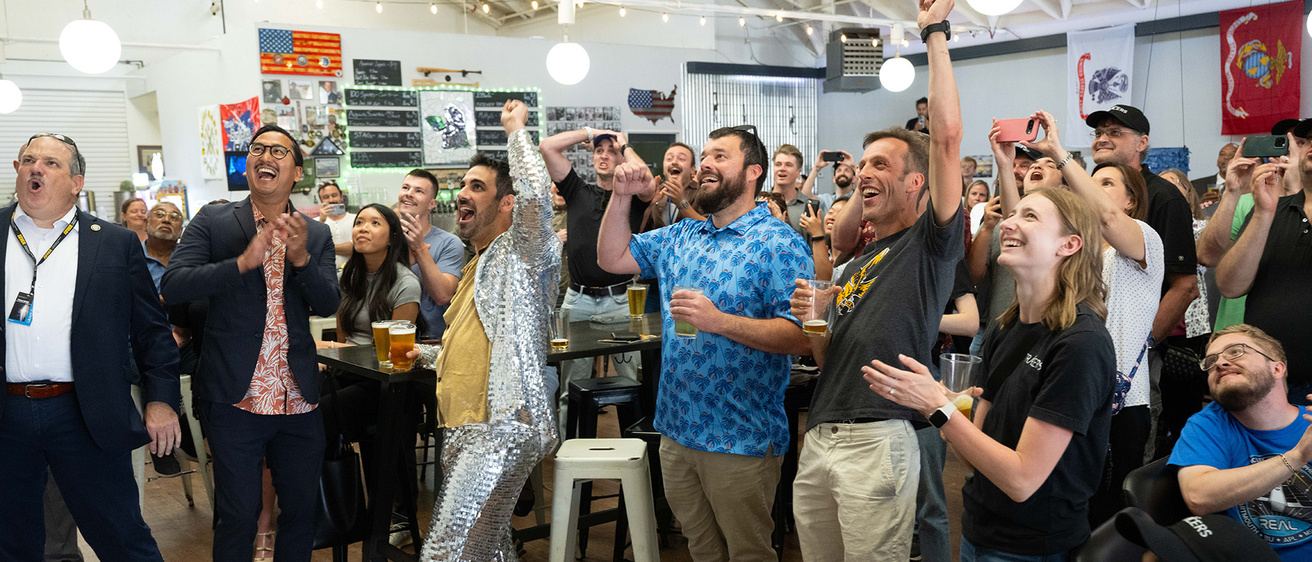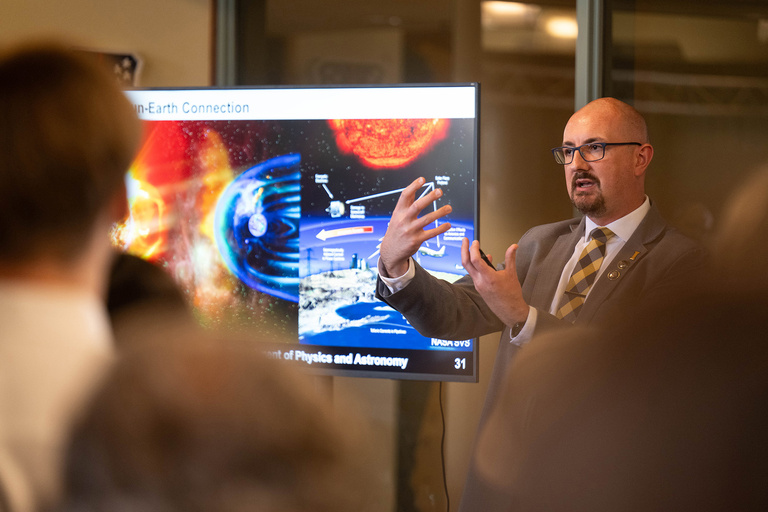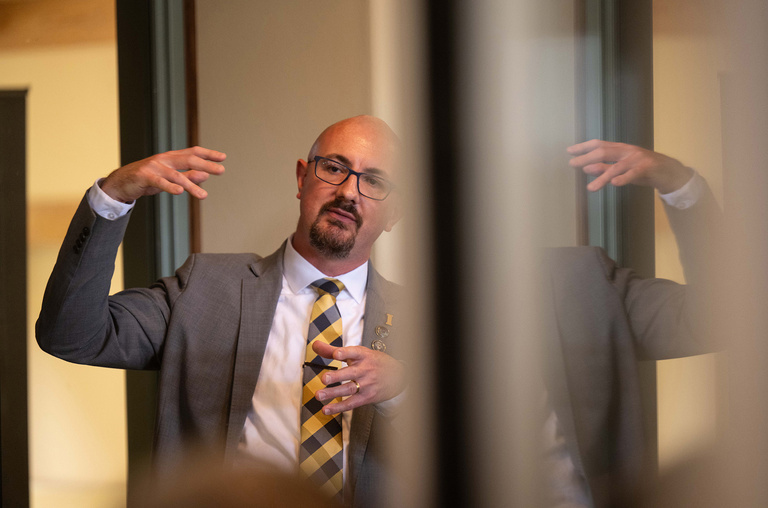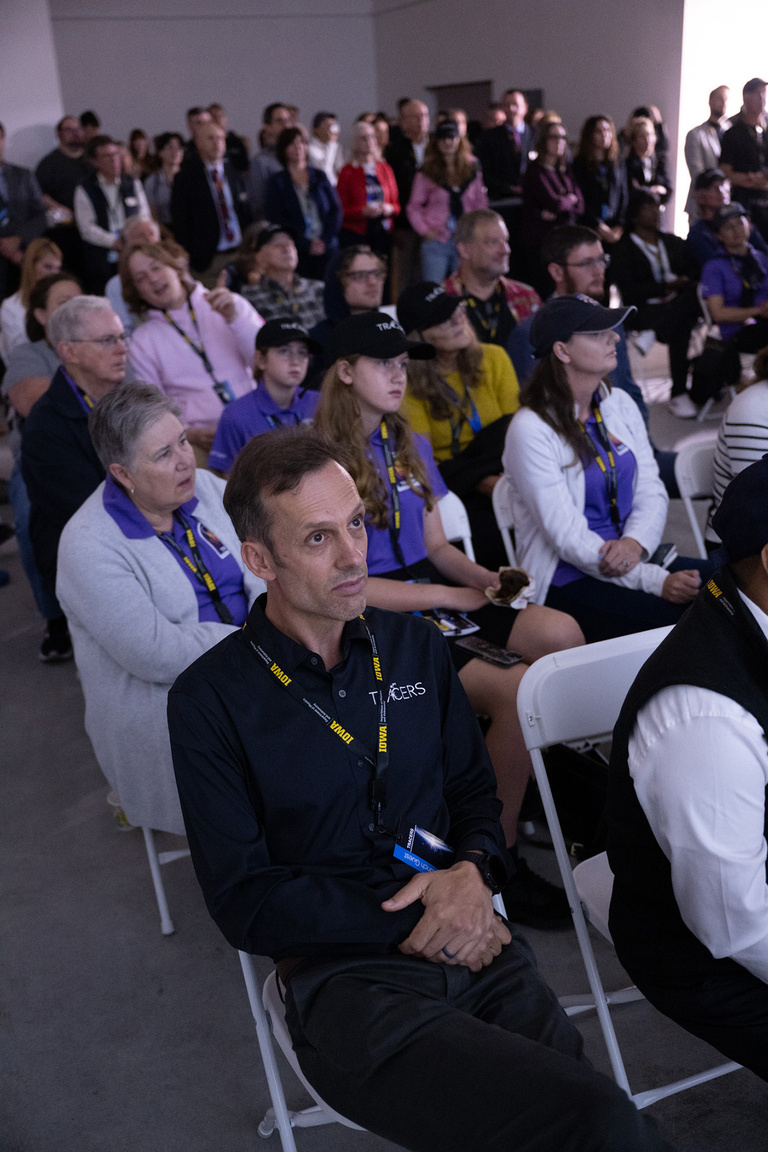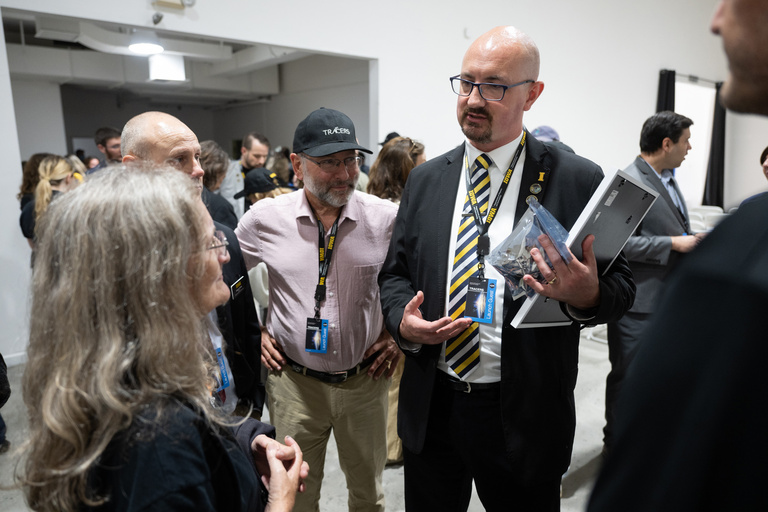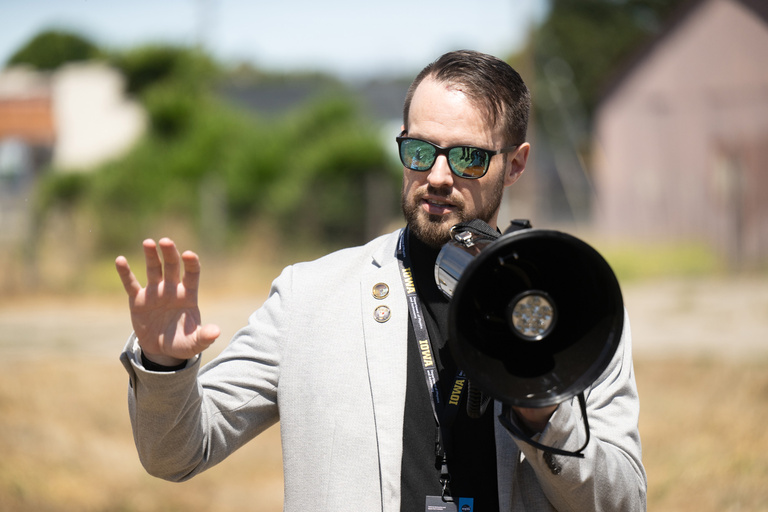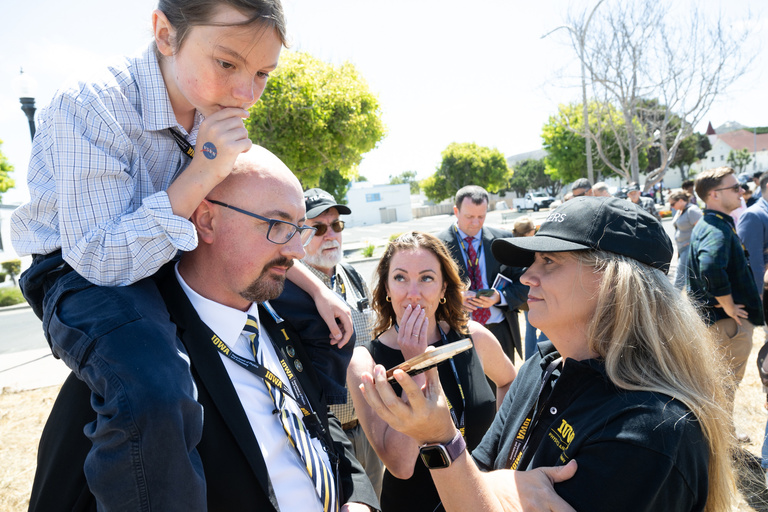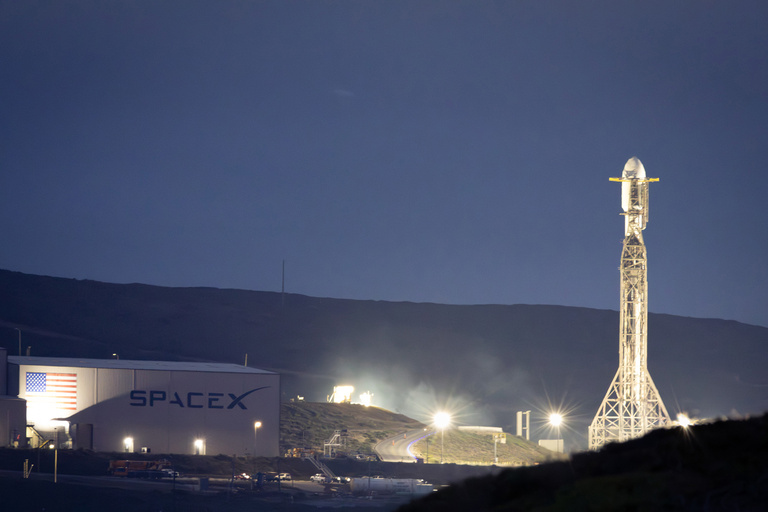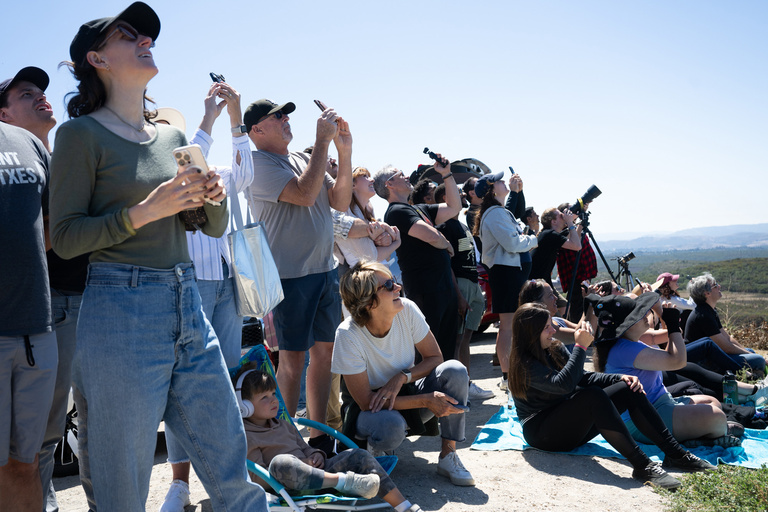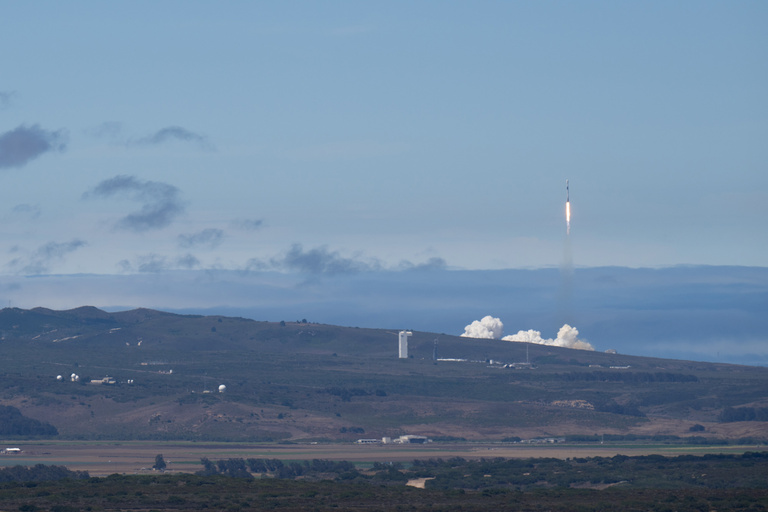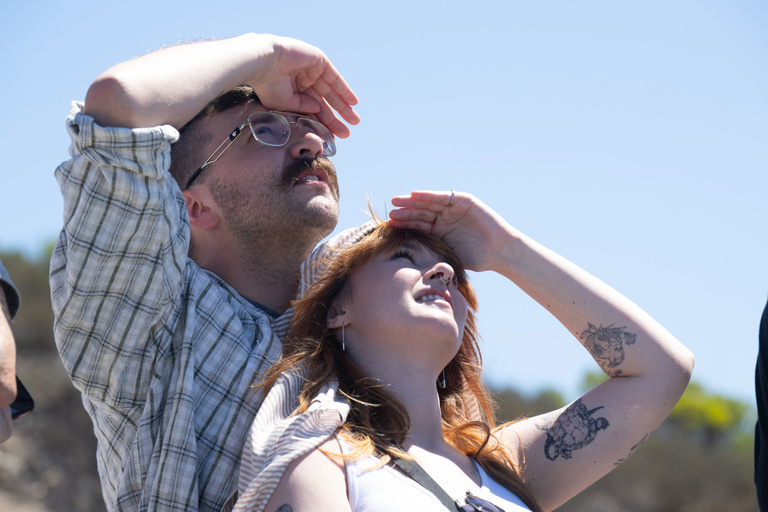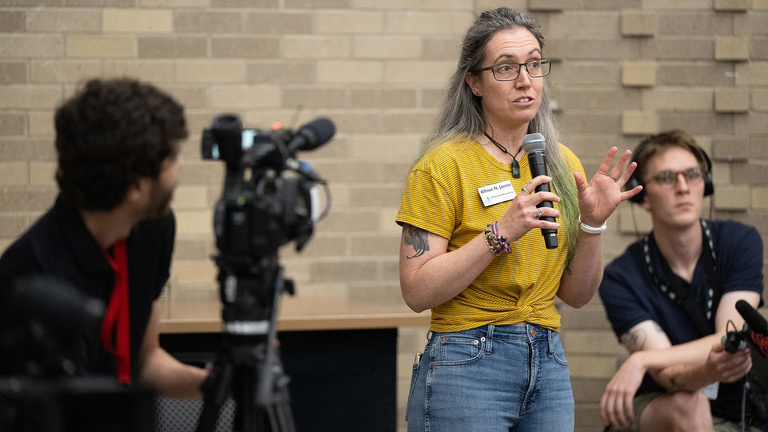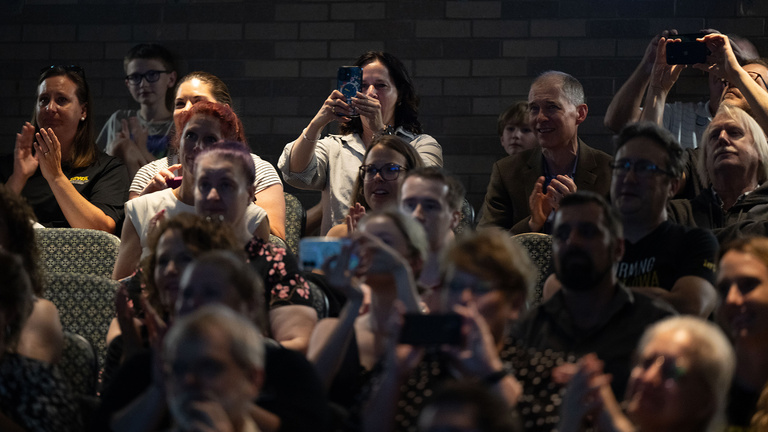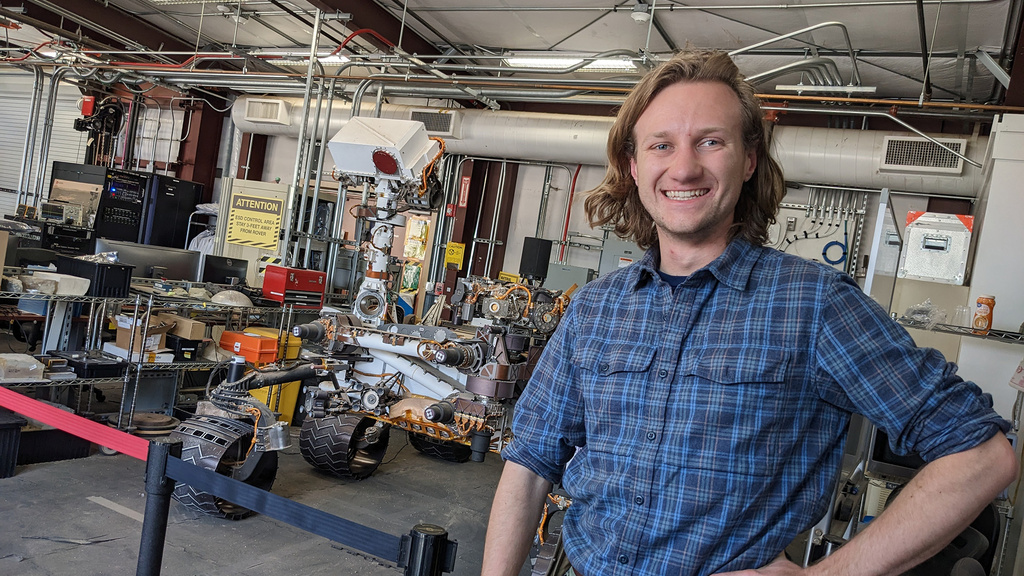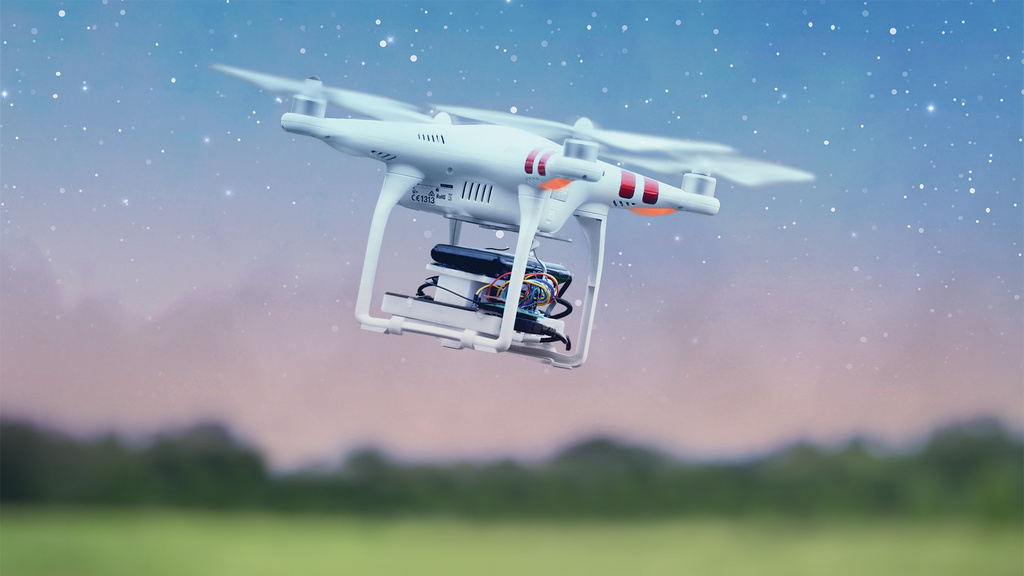Dozens of scientists from the University of Iowa traveled to Lompoc, California, to joyfully witness the successful rocket launch associated with TRACERS — the NASA-funded mission to study the mysterious, powerful interactions between the magnetic fields of the sun and Earth.
Story: Richard C. Lewis
Photography: Tim Schoon and Justin Torner
Published: July 23, 2025
On July 23, 2025, at 11:13 a.m. PDT, a Falcon 9 rocket shot upward from Vandenberg Space Force Base in California, and the University of Iowa notched a significant milestone in space physics.
The rocket carried two satellites, each equipped with five instruments exhaustively tested by Iowa scientists, for TRACERS, the $171.6 million NASA-funded mission to study the mysterious, powerful interactions between the magnetic fields of the sun and Earth.
The mission, conceived nearly nine years ago by Iowa physics professor Craig Kletzing (who died in 2023 at age 65), will study how Earth’s magnetic shield — the magnetosphere — protects our planet from the supersonic stream of material from the sun called solar wind. As the satellites fly pole to pole in a sun-synchronous orbit, they will measure how magnetic explosions send these solar wind particles zooming down into Earth’s atmosphere — and how these explosions shape the space weather that impacts our satellites, technology, and astronauts.
Dozens of scientists from Iowa — many joined by their spouses and families — journeyed to Lompoc, the town closest to Vandenberg, host to the SpaceX-operated launch pad abutting the Pacific Ocean. On launch day, some gathered in a small field in downtown Lompoc to joyfully witness the launch, which was delayed by a day. Others ventured to a hill outside the city limits, adorned with TRACERS hats and T-shirts and cheering giddily as they watched the rocket rise against a backdrop of scrub grass hills and the ocean.
“It's surreal. That’s the best way to describe it,” said Amanda Lasko, an aerospace project engineer on the Iowa TRACERS team who earned a degree in electrical engineering from Iowa in 2019. “It’s been nearly 10 years of hard work for so many, and it feels great. I’m incredibily proud to be part of this mission.”
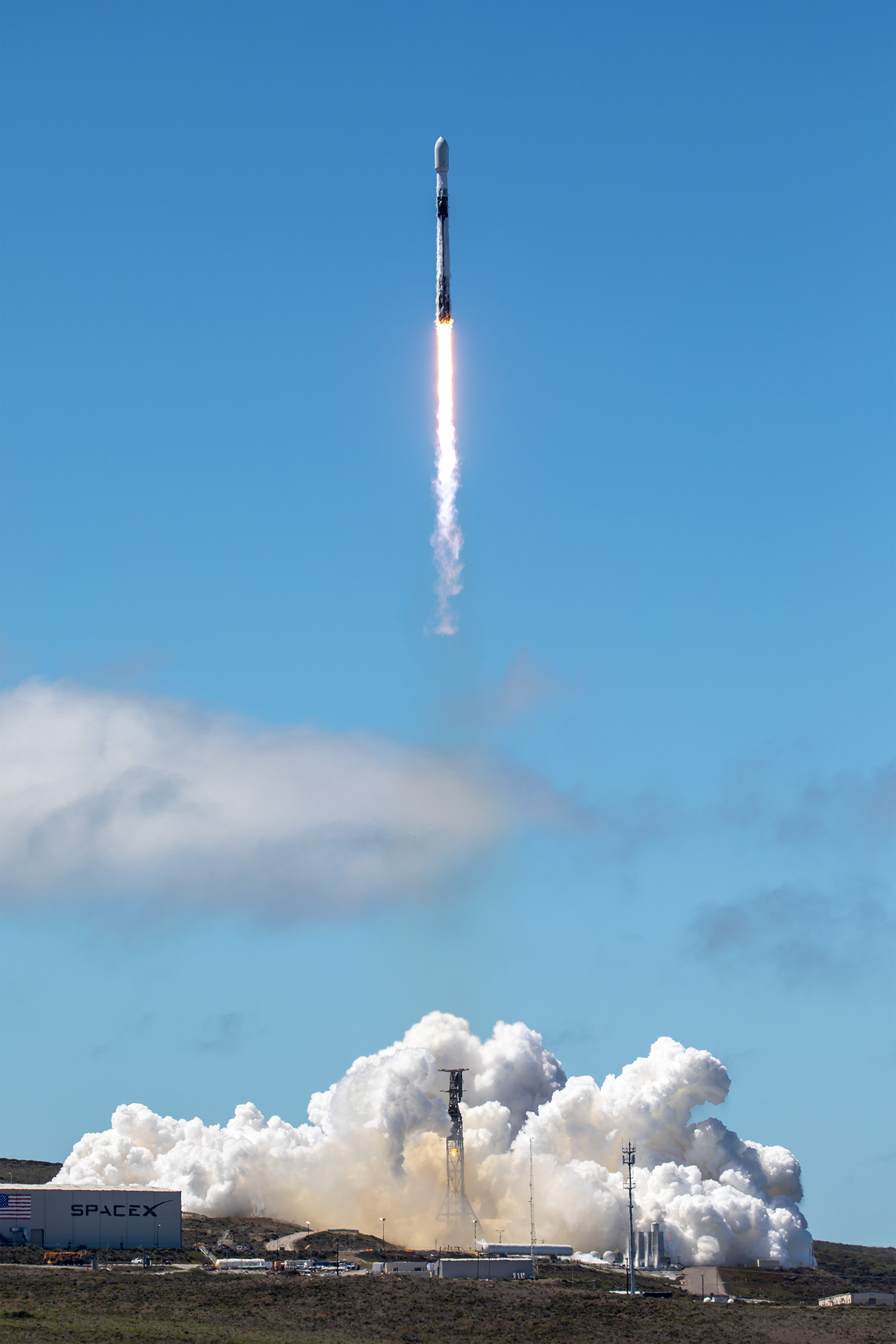
NASA’s TRACERS (Tandem Reconnection and Cusp Electrodynamics Reconnaissance Satellites) mission launches at 11:13 a.m. PDT on Wednesday, July 23, 2025, atop a SpaceX Falcon 9 rocket at Space Launch Complex 4 East at Vandenberg Space Force Base in California. (Photo by SpaceX.)
Standing next to Lasko was Antonio Washington, who has worked on TRACERS since he graduated from Iowa in 2019. For two weeks, Washington worked overnight shifts to assist with prelaunch activities at Vandenberg.
“I feel like we’ve been working so hard as a team, and to get to the finish point and see the rocket go feels incredible.”
Two days before the launch, David Miles, associate professor in physics and astronomy at Iowa and principal investigator for TRACERS, spoke about the mission during a public presentation at the Space and Missile Technology Center, a museum commemorating historic rocket launches at Vandenberg.
“The TRACERS mission has been in development for a long time and from a massive investment in space at the University of Iowa,” Miles said. “It shows Iowa can develop a NASA mission of this caliber, and it shows our ability to contribute to space science in the future.”
Joe Westlake, heliophysics division director at NASA Headquarters in Washington, D.C., which oversees TRACERS and other missions involving the sun’s influence on planets and space, praised the knowledge the mission is expected to yield.
“NASA’s heliophysics fleet helps to safeguard humanity’s home in space and understand the influence of our closest star, the sun,” Westlake said in a NASA statement. “By adding TRACERS to that fleet, we will gain a better understanding of those impacts right here at Earth.”
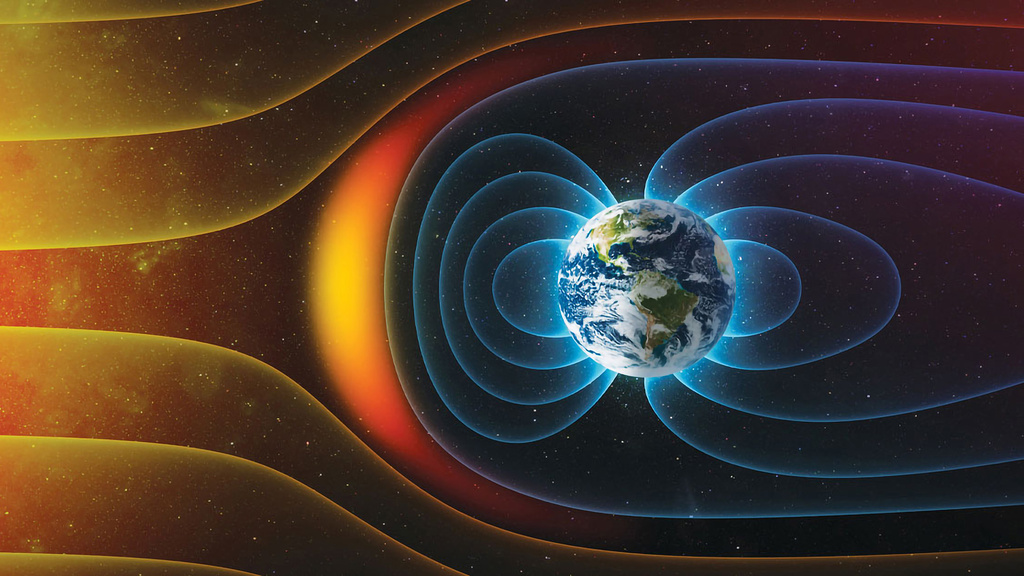
TRACERS: The milestone moments so far
With the July 23, 2025, TRACERS launch in the books, take a trip through the timeline of the university’s largest externally funded research project, which will examine the powerful interactions between the magnetic fields of the sun and Earth.

“It's surreal. That’s the best way to describe it. It’s been nearly 10 years of hard work for so many, and it feels great. I’m incredibily proud to be part of this mission.”
Kletzing first proposed the Tandem Reconnection and Cusp Electrodynamics Reconnaissance Satellites, as TRACERS is known, in October 2016. After winning initial funding in 2017 to fully develop the proposal, NASA in 2019 awarded the mission to the university, which stands as the largest external research award in university history.
“One of the long-term goals is to evolve toward ‘space weather’ models to improve our ability to utilize space as a resource,” Kletzing said when the mission was fully funded. “TRACERS will be essential to achieve this goal.”
In the years since, an all-Iowa team of more than 80 physicists, engineers, machinists, electronics and circuitry experts, research scientists, and support staff — from undergraduate students to tenured faculty — have been part of TRACERS’ progress toward launch. A major plank of that work involved fully testing the instruments that compose the mission’s science — and a demonstration payload built at Iowa, called MAGIC, which will test new magnetic field sensing technology. Two of the instruments, the Analyzer for Cusp Electrons and the Magnetic Search Coil, were designed and built at Iowa, further burnishing the university’s reputation in space instrumentation.
The twin TRACERS satellites will fly one behind the other, 10 to 120 seconds apart, as they pass through areas where Earth’s magnetic field opens near the North and South poles. The satellites will measure magnetic reconnection 3,000 times in the first year alone, which will help scientists observe how quickly reconnection changes and evolves by comparing data collected by each satellite.

TRACERS takes flight; a new song drops
Worst Impressions, an Iowa City–based alt-rock/punk rock band featuring UI aerospace quality engineer Garret Hinson, wrote and released the song “TRACERS” to honor the mission’s original principal investigator, Craig Kletzing, who died in 2023.
Jasper Halekas is the lead scientist on the Analyzer for Cusp Electrons instrument, which will determine the extent of the funnel-shaped magnetospheric cusp region where the energy from the sun connects with Earth.
“Our instrument measures electrons, which are kind of like the speedsters that tell us what’s happening along the magnetic field lines,” Halekas explained. “So, when the satellites are going through the cusp, it will give us the first indication what’s going on — the tracers of TRACERS, if you will.”
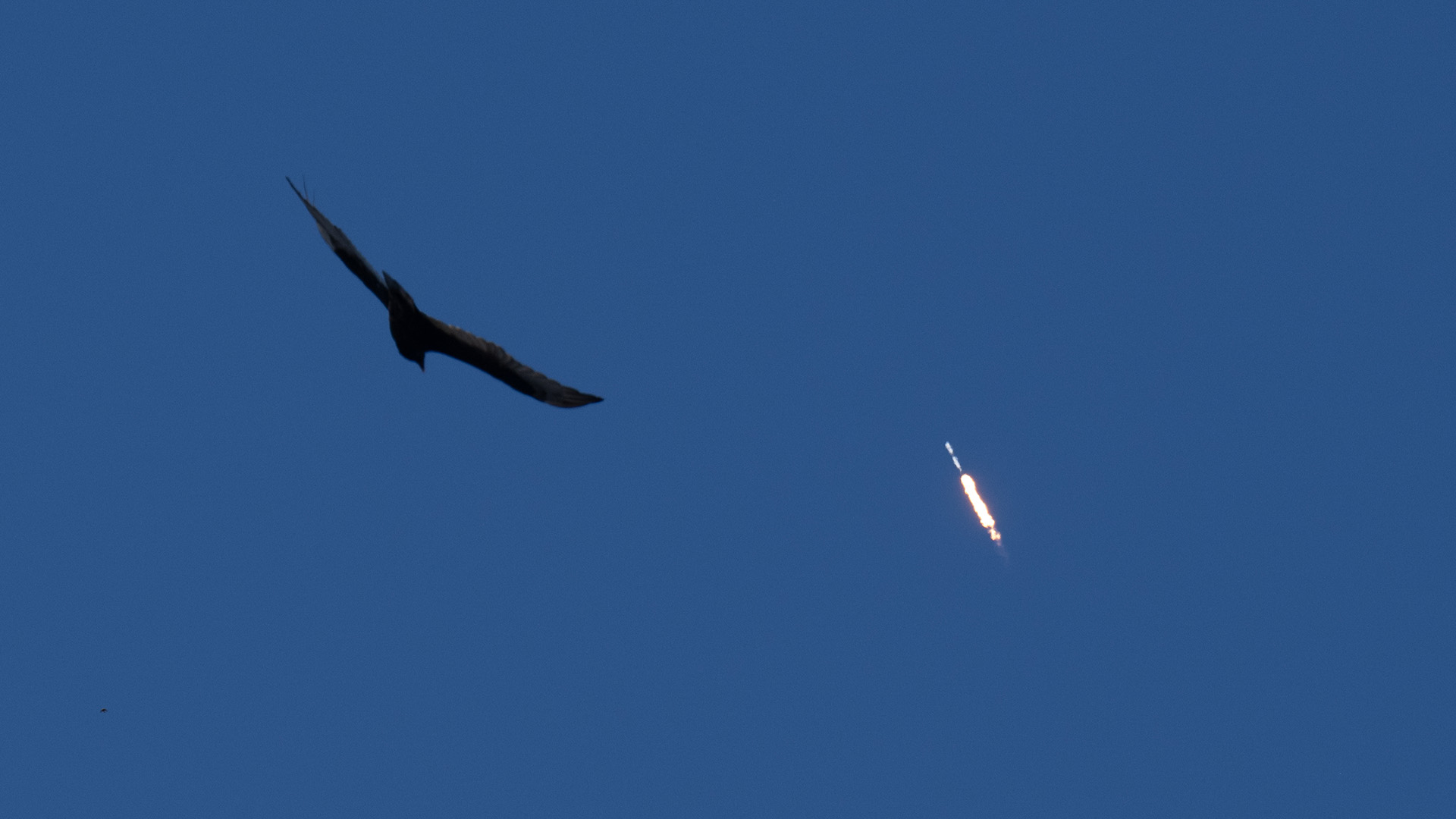
A SpaceX Falcon 9 rocket ascends from Vandenberg Space Force Base in California, carrying two satellites, each equipped with five instruments exhaustively tested by Iowa scientists, for TRACERS. Although the bird in the frame likely is not a hawk, there were plenty of Hawkeyes on the ground to witness the historic moment for the University of Iowa.
Sam Hisel worked on design modifications for the ACE instrument, after previously helping to design, assemble, and test the circuit board for MAGIC. He said he started tearing up as he watched the rocket soar into a mostly blue sky.
“This is the first rocket launch I’ve seen in person, and it was really cool,” said Hisel, a Lansing, Iowa, native who graduated from Iowa in 2019 with a degree in electrical engineering. “I’ve got stuff on there that I physically touched, and it’s just emotional to know it’s going to space.”
Kletzing’s wife, Jeanette Welch, traveled from Iowa City for the launch. While she left after the first launch window had to be scrubbed, she beamed when asked how her late husband would react to knowing his long-held dream has sprung to life.
“He would be totally stoked,” Welch said, imagining Kletzing’s reaction. “The work, this mission, was so important to him. He was so happy when he won the contract, and he would be so happy with all the science that’s going to come in, because people will be using what we get for years to come.”
